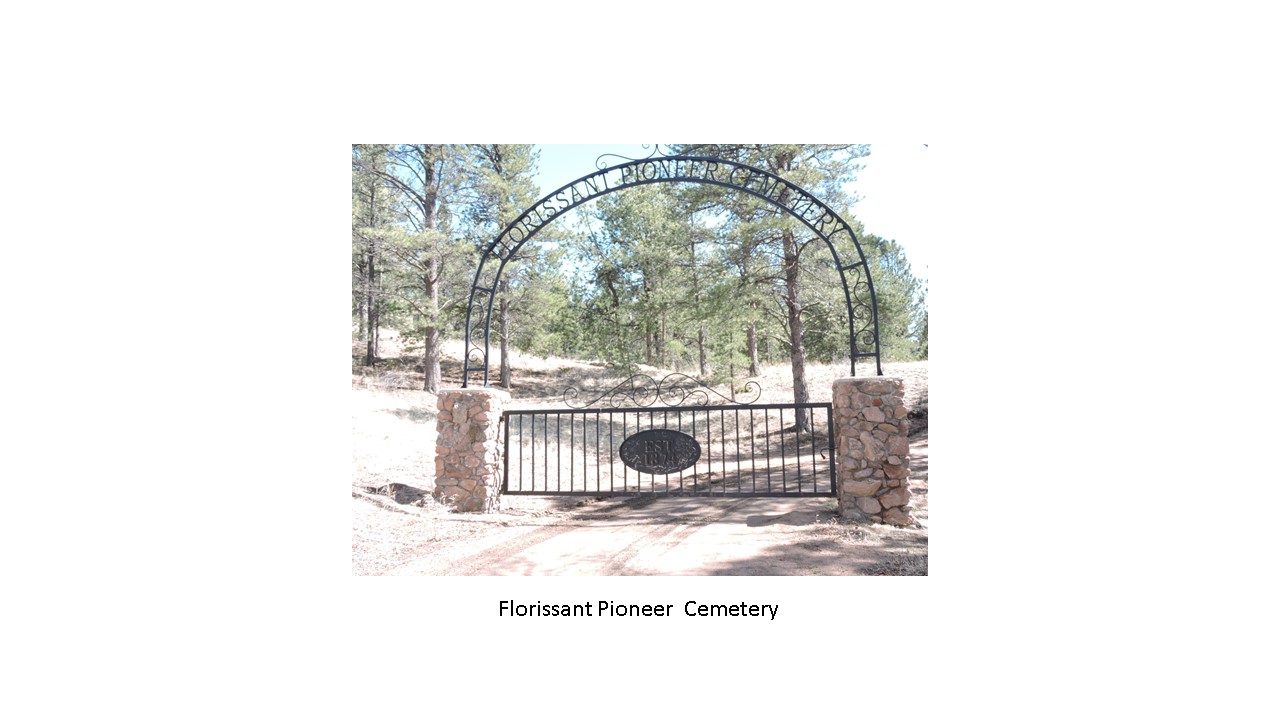
FLORISSANT PIONEER CEMETERY
Established 1874
Florissant was established in June, 1870, when the founder Judge James Castello built a Trading Post adjacent to a Ute Indian fort. In 1872, Judge Castello applied for an official post office which he named “Florissant” for his hometown in Missouri. Gold seekers and pioneers flooded into the area, but were unable to file legal title to homesteads until a survey of the Pikes Peak region was published in 1876. Later, when the Colorado Midland Railroad arrived 1886, scores of new families moved into the area. These early pioneers lost loved ones in the ebb and flow of life, and an informal cemetery sprang up among the aspens and pines. Many of the graves were marked by a simple wooden stake. The earliest burial was probably that of a child who died in 1874, but the cemetery is filled with dozens of un-marked graves (with unknown dates) as the wooden markers deteriorated and disappeared. There may very well be earlier burials.
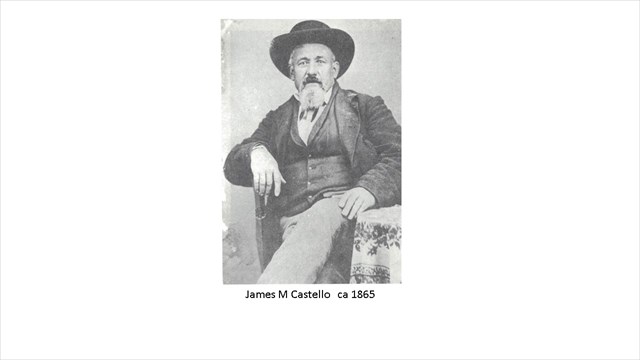
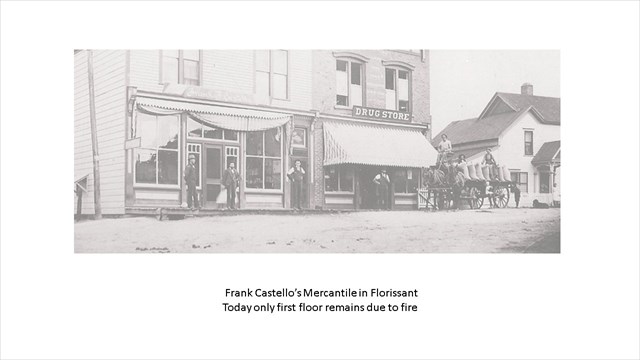
On August 27, 1886, Frank F. Castello (son of James) and his neighbors John Wilson and Valentine Hamman applied to El Paso County (Teller County was carved out of El Paso County 1899) for a “Florissant Cemetery Association.” Frank Castello and John Wilson were named as the Trustees. In November 1900, Frank Castello applied to have only himself named Trustee of the Florissant Cemetery Association. The record is vague after this date, and the cemetery fell into disrepair. The Pikes Peak Historical Society began voluntary maintenance in 1988. In March, 1992, the District Court in Teller County named the Pikes Peak Historical Society as Trustee of the Cemetery. (Florissant Heritage Foundation was renamed Pikes Peak Historical Society in 2001.)
Many Florissant Settlers, with interesting stories, are interred in this pioneer cemetery. As you drive into the cemetery, their burial sites are located at the top of the entry road on the right (west). The first, most noticeable graves are to the left (south) in row 003(find the numbers on the top of short, white rebar posts), the graves of the Howarth family. Samuel Howarth and his wife Zillah came to Florissant from England. Samuel was a trout fly tier by trade and his tied flies won first and second place in the 1904 World’s Fair in St. Louis. He had a little business in Florissant selling his tied-flies to fishermen. His wife Zillah died from burns when a kerosene lamp exploded in her hands. Their son Hubert was killed in a train wreck in Utah. All are buried here in Florissant.
After visiting the Howarth graves, follow the path to the flag pole. To the left (south) in row 007, are the graves of the Castello family. James M. Castello was the founder of Florissant. The Castello’s were on friendly terms with the Ute Indians. Catherine Castello (buried here) was given the name “Heap Big Rocky Mountain Biscuit” by the Utes as she so often baked biscuits for the Utes who came to the Castello home.
The Florissant Pioneer Cemetery contains the graves of several Civil War veterans. These grave sites are in row 008, just west of the Castello graves. To the left (south) is the grave site of John M. Hensley. At age 37, Hensley (when living in Indiana) enlisted in Company H, 99th Indiana Infantry. He transferred to the 59th Colored Infantry which was a dangerous move. If a white officer (Hensley was a 1st Lieutenant) commanding black troops was captured, the officer could be shot and his black soldiers returned to slavery. Fifteen years after the Civil War, Hensley and his wife went west, settling on a potato farm in Florissant. Hensley’s true desire was to find gold. His hopes were dashed when his Florissant mine held no gold, only copper. He continued digging in his potato patch (not far from this cemetery) and on September 8, 1894, was found buried in a shaft. The Daily News (Denver) reported: “The work he has done, the sinking of an 86 foot shaft through solid granite all alone and under the discouragement of all his friends, is probably the most marvelous feat ever accomplished by one lone man, especially by a man who is above 70 years of age.”
Continue left (south) to the grave site of another Civil War veteran, David S. Portis. David, born in Lancaster, Indiana, enlisted in the 14th Indiana Light Artillery Battery in 1862. At the battle of Shiloh, David contracted chronic diarrhea and spent the remainder of the war in and out of hospitals. Like so many Civil War veterans, David suffered from lung disease and was advised to move to the dry climate of Colorado. David ranched in Colorado. At the time of his death, he received an invalid pension of $12.00 per month for the disability sustained in the Civil War.
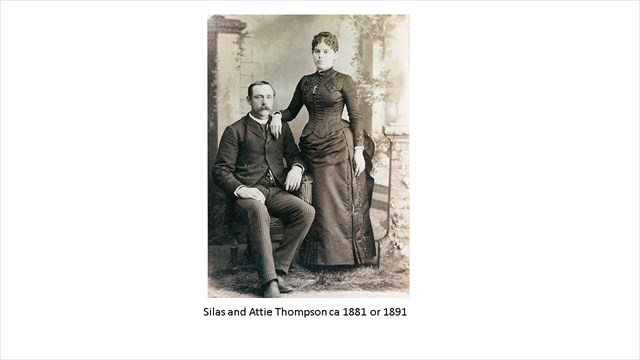
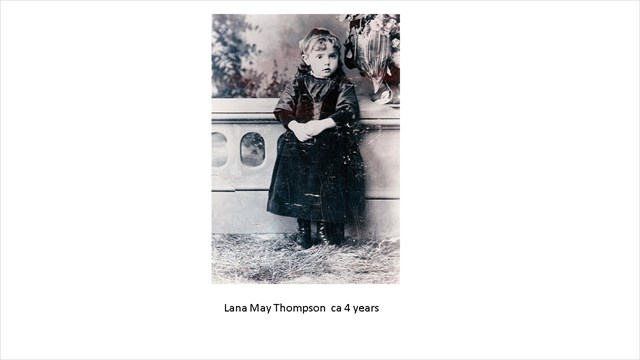
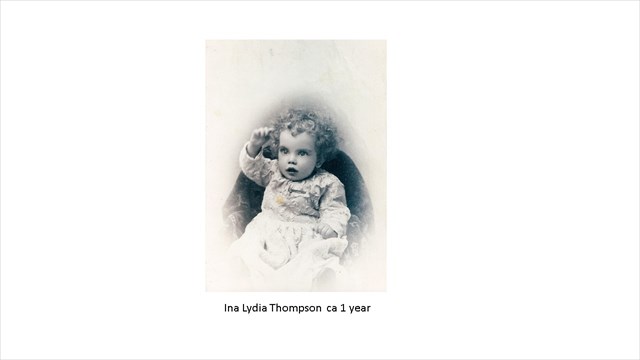
From the Portis grave sites, walk downhill (west) to row 014. Here you will find the poignant grave sites of two young girls, Lena and Ina Thompson, daughters of Silas and Attie Thompson. Attie’s wedding dress and family photos are on display at the Pikes Peak Historical Society museum in Florissant. Attie wrote a marvelous memoir of her life in this area called “Daughter of A Pioneer”. Regarding the death of her daughter Lena, Attie wrote: “We sent to Colorado Springs for the little white coffin and the wreath of flowers. We put on the little red velvet dress that she loved, and she looked so dainty and sweet that the thought of giving her up was unbearable. As we stood by the grave, I became hysterical and tried to jump in, screaming as I did so, “Oh, do not take her away. Let me be buried with her.” That moment happened right here in the Florissant Cemetery.
When you visit our Pioneer Cemetery, remember that you are walking on hollowed ground.
-
This is a traditional cache with a combination lock that has 3 two digit numbers. They can all be solved within 40 feet of the flag pole up on the hill.
- 1st number - Find the grave of the wife of Frank F Castello. Subtract the day of the month she was born on from the day of the month she died on. _____
- 2nd number - Find the grave of the founder of Florissant (see history in cache description). Divide his age when he died by 2. _____
- 3rd number - If the wife of James M Castello had been born one day earlier, she would have been born on this day. _____
-
Enter the combination on the lock at the cache by doing the following:
-
Turn dial three times right and stop at 1st number
-
Turn left full turn, pass the 1st number and stop at 2nd number.
-
Turn right to 3rd number. Open lock.